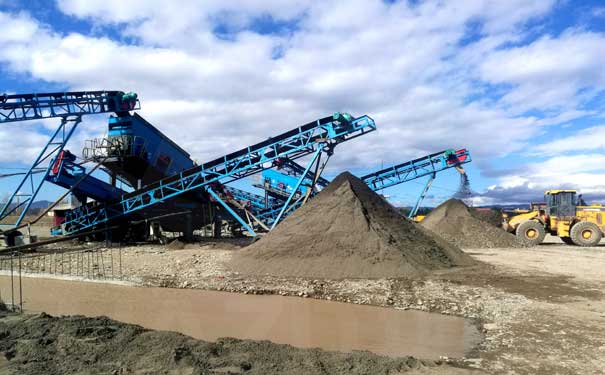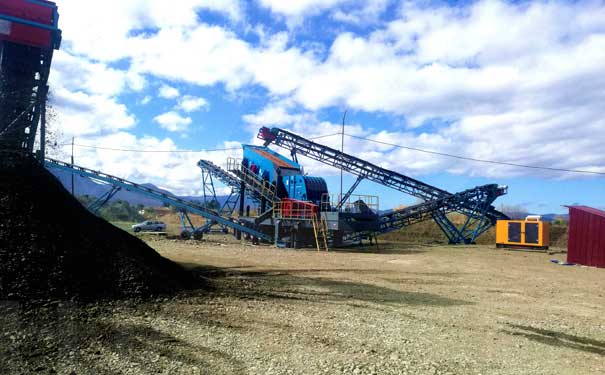At present, environmental protection is the priority, river sand mining is restricted, and construction waste continues to increase. How to turn construction waste into resources and tailings into resources under strict environmental protection requirements has become an urgent problem to be solved. The main advantages of the multi-stage combined operation of the mobile crusher are flexible collocation, flexible movement, and no environmental restrictions. As long as there are raw materials, it can be crushed, screened, and sand made anytime and anywhere. The specific mobile crusher configuration requirements can be based on the specific needs of users be tailored.
Some customers have questions can the mobile crusher meet environmental protection requirements?
Preventing problems from the source: The mobile crusher is continuously optimized during the design, with green material selection, advanced technology, and rigorous workmanship. Some nodes that are likely to cause dust pollution and leakage to increase their sealing, control the spread of dust and noise from the source, thereby achieve environmental protection standards.
Dust prevention during operation: When the mobile breaker is in operation, a pulse dust removal device is added to perform auxiliary dust collection processing, with a high dust removal rate, plus a corresponding anti-manipulation system, and multiple protections.
Multi-pronged approach: Add spray atomization devices at the inlet, outlet, and conveyor belt, etc., which can effectively control pollution and environmental protection is not a problem, and users can rest assured to put into production.
Some customers have questions can the mobile crusher production line achieve the production effect of the fixed crushing production line? What are the specific advantages? Compared with the fixed production line, the mobile crushing station has become an ideal equipment choice due to its small footprint, fast production time, and convenient transfer. The details are as follows:
1. To meet different needs. There are two types of mobile crushing stations, crawler type and tire type, with different models and types of crushers, which can meet the crushing needs of different materials, and the discharge can also be adjusted according to requirements. Among them are coarse crushing mobile stations, medium and fine crushing and screening mobile stations, independent operation combined mobile stations, fine crushing and shaping and screening mobile stations, fine crushing and sand washing mobile stations, three-combination and four-combination mobile stations. To meet the various needs of customers, and to provide customers with simple, efficient and low-cost project operation hardware facilities based on the principle of "disposing of materials nearby". According to different crushing process requirements, it can be composed of "first crushing and then sieving" or a "first sieving and then crushing" process. The crushing station can be combined into a two-stage screening system for coarse crushing and fine crushing according to actual needs, or it can be combined into coarse, medium and fine. The three-stage screening system has high flexibility.
2. Save investment costs. In terms of energy consumption, the mobile crusher adopts advanced technology to save fuel and electricity; in terms of installation and demolition, there is no need to build foundations or transportation. Just reasonably assemble the crusher to go on the road, which can save a lot of money expenses; in terms of operation, the entire work process has smooth discharge, stable operation, convenient operation and adjustment, low failure rate and low operating costs.
3. Low site requirements. The mobile crushing station is capable of crushing operations in various sites because of its strong mobility, because it can be opened to the site for operations without infrastructure.
4. Good environmental protection effect. The crushing and screening processes of the mobile crusher are all carried out inside the equipment, with good sealing effect, and also equipped with professional dust and noise reduction devices; direct operation into the processing site to avoid secondary demolition of construction waste during transportation pollution, reduce pollution to a lower limit, and have a good environmental protection effect.



